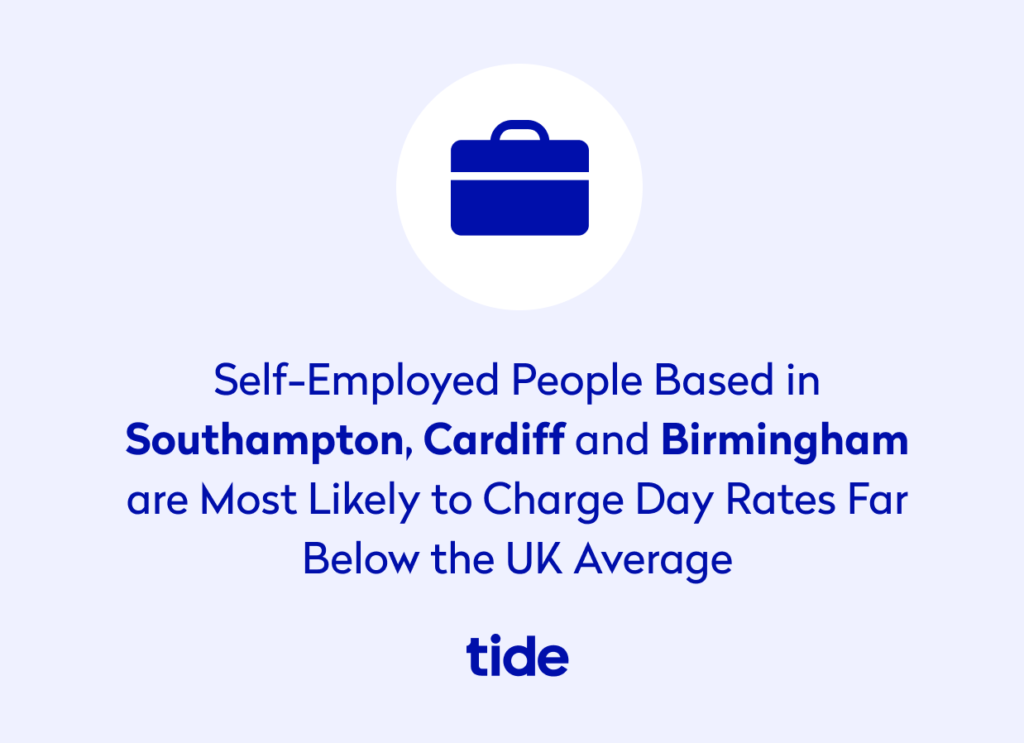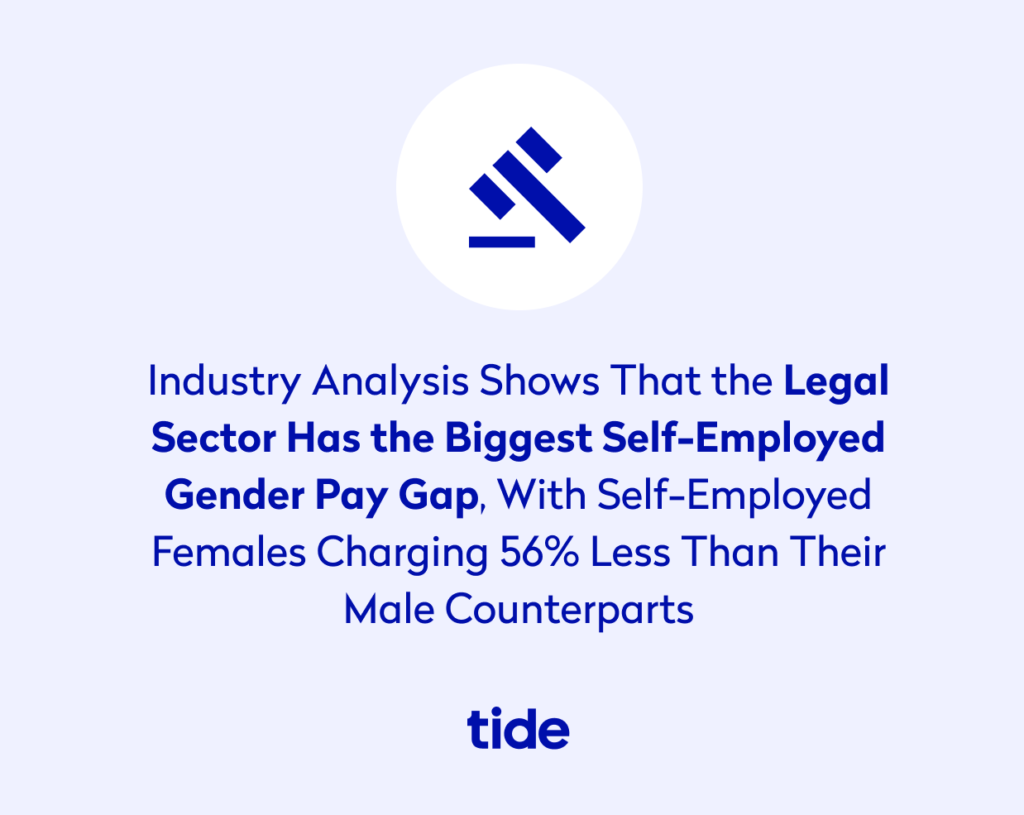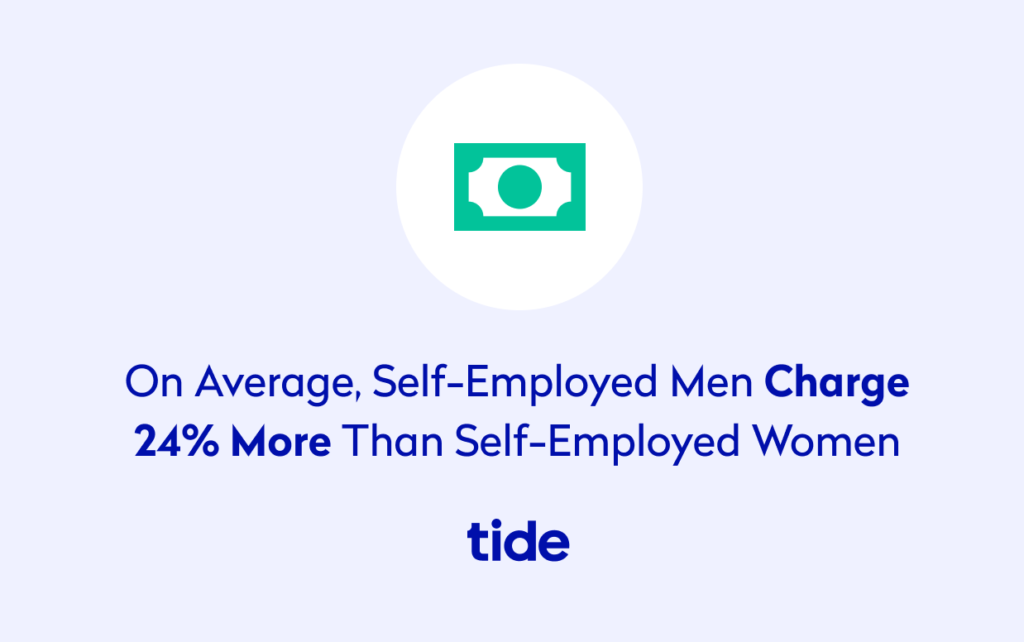Are you happy with the day rate you charge as a freelancer? How does your rate compare to market norms? Are you squarely in the middle of the market, or do you want to push your rates upward?
In this article we’re reviewing the results of our freelancer survey, with a focus on the day rates charged by people around the country.
Average freelancer day rates
Our survey found an average day rate of £129.85, which equates to an annual salary of £33,111.75, before taxes and expenses (based on 255 working days in 2021).
Comparing this data to salaries, employed people have an average income of £29,484, based on an average pay of £567 per week. Converted to a day rate, employed people get an equivalent of £113.40 per day. Self-employed people earn 12% more, on average.
It’s important to note that these numbers are averages across all industries, locations, and respondents. Our survey data may be skewed by people who work as fixed-term contractors, rather than having lots of short-term engagements with a larger client pool. This average day rate may not be meaningful in terms of the norms in your industry or profession.
We’ll talk more about setting – and raising – your day rate later on, but a key part of the process is to understand what people expect to pay. You don’t necessarily need to mimic your peers, but you need to know where your rates place you in the market. Are you pricing yourself as a premium expert – or a value-for-money professional?
Freelance day rates by location
Once again, it’s essential to recognise that these survey results are an interesting way to look at freelance day rates; they are not a guide or a suggestion. Your location may influence your day rates, but they should not determine them. You do not need to limit your aspirations because of your location, particularly given the volume of projects now completed entirely online.
With those caveats out of the way, let’s look at some of the highlights from the location data.
Our survey results are divergent from many income reports (e.g. regional gross disposable income stats from ONS), which typically show higher earnings in the south. In our data, London is the only southern city to achieve an average day rate that exceeds the nationwide average for all freelancers.
Location splits for self-employed day rates, ordered from highest to lowest:
Newcastle (£176.09)
Belfast (£165.83)
Sheffield (£163.87)
Glasgow (£152.50)
Edinburgh (£150.68)
London (£149.39)
Leeds (£139.50)
Nottingham (£121.27)
Bristol (£118.81)
Norwich (£118.67)
Manchester (£113.11)
Liverpool (£103.64)
Birmingham (£94.12)
Cardiff (£92.13)
Southampton (£85.53)
The northern bias in these results might be explained by a lack of parity between respondents. For example, it could be that more of our northern respondents are in higher-paying industries, or due to the different sample sizes for each region. Or it could just be that our friends in the north are charging higher rates.
The difference between the top of the table (Newcastle, £176.09) and the bottom (Southampton, £85.53) is £90.76 – which means that people in Newcastle are currently charging more than double the day rate of their counterparts in Southampton.
Freelance day rates by industry
There are similarly large gaps between the poles of our industry table. At the top, legal professionals are charging an average rate of £182.81, and at the other extreme we have medical and health workers on £73.36.
Industry splits for self-employed day rates, ordered from highest to lowest:
Legal (£182.81)
Finance and Accounting (£166.32)
Construction (£160.28)
Media/ marketing/ advertising/ PR & sales (£149.36)
Hospitality and leisure (£148.89)
IT & telecoms (£142.38)
Retail (£120.66)
Education (£111.48)
Other (£104.85)
Transportation & distribution (£92.09)
Manufacturing (£91.11)
Real estate (£90.00)
Medical and health (£73.36)
Other industries that beat the average day rate are finance and accounting, construction, media and marketing (also including advertising, PR and sales roles), hospitality and leisure, and IT and telecoms.
However, industry analysis shows that the legal sector has the biggest gender pay gap within the self-employed group, with self-employed females charging, on average, 56% less than their male counterparts.
Gender differences in freelance day rates
Most income reports find differences in the earnings of men and women. Our data is no different, although the picture is not entirely clear. Because while the overall averages show a gender pay gap that puts women at a disadvantage, the earnings-by-industry data shows women pulling ahead in some sectors.
Men charge an average day rate of £149.48, while women charge an average day rate of £120.38 – meaning they earn 19.5% less than men.
Looking at the averages by industry, we see a more complex picture. In some sectors, women charge much higher rates, while men dominate other professions. Some of the differences may be explained by men and women taking on different roles within these industries, while some sectors may be more dominated by one gender – meaning that the dataset is easily skewed.
For comparison, the 2020 UK gender pay gap for full-time employees (according to the Office for National Statistics) is 7.4% – down from 9% in April 2019.
How can you raise your day rate?
There are many pricing strategies, which we’ve explored in depth in this article on how to price your services.
But if you’ve already set your day rate, and are now considering ways to raise your rate, then you can approach it more simply.
Consider the following three factors:
1. Market expectations
You may want to charge a higher rate, but will people pay it?
In some professions, rates are set by clients, recruiters or hiring agencies, and you may have limited scope for changing your pricing. In such cases, the approach to raising your rates may rely on you migrating into higher-paying grades, roles, or departments. You may also need to complete additional training or gain professional qualifications to earn higher rates.
In other professions, your rates may be a direct reflection of your experience, expertise, reputation, and credentials. In these cases, you are more likely to set your own rates. Although even in these cases, your clients may have established expectations of what a freelancer like you should charge.
In theory, there is no upper limit to the amount you charge for a day of your time. But in reality, you will need to manage client expectations, and possibly find ways to justify higher rates.
2. Justification
In most professions and industries, you will find a top-tier of expert professionals who charge a significant premium for their time. These professionals may charge 10 or 100 times more than the standard rate, but their clients pay the premium because they believe the exceptional professional is worth the money. Such professionals are usually highly experienced, deeply skilled, authoritative, and well known in their industry. Because of this, they can justify higher rates. And because of their visibility in the market, they have abundant demand, and can afford to exclude price-sensitive clients.
You don’t need to be the Ronaldo of your industry to charge higher rates, but you do need ways to justify charging at the higher end of the pricing scale. How to go about this depends partly on your industry and profession. You may need to get a professional certification. Or speak at conferences. You may need to do advanced training. Or invest in your branding. You may need to gain experience in more demanding roles or with larger clients. You may need to network with the right people, or join a supplier framework, or develop in-demand skills.
Look at other professionals in your niche, and examine the qualities that enable them to charge higher rates. Professional associations, networking groups and online communities are easy ways to learn from your peers.
3. Opportunity
Raising your rates can bring an element of risk. After all, some clients are price-sensitive, and will not accept higher rates. By raising your rates, you risk losing the clients who primarily make decisions based on cost.
So, how can you increase your rates without risking too many of the opportunities that come your way?
One approach is to build up your marketing activity until you reach a point where you have a solid base of clients, and a steady stream of leads. At this point, additional clients are nice to have, but not essential for paying the mortgage. You can now tease your rates upwards when pitching to prospective clients, without mourning the loss of a new client.
Day rates and perceived value
Some freelancers make the mistake of thinking that low day rates are a form of kindness or generosity, and that they can help make you more accessible to good people who need your help.
And while this can be true, low rates are also an accidental invitation to bargain-hunters who are too focused on money to recognise good value. This can mean that the freelancers who charge the lowest rates have to deal with the most difficult clients.
To add insult to injury, clients may be less likely to value freelancers who charge rates at the lower end of industry norms, because low rates implicitly suggest low skill, low experience, and low confidence.
What does your day rate say about you? Are you unwittingly giving off a negative perception of your professional value? Do your clients think you are highly skilled – or just low-priced? This is another important lens through which to consider your day rate. There is nothing inherently wrong with charging lower rates, but if you find that many of your client engagements are problematic, your pricing strategy could be part of the problem.
Wrapping up
Interested in improving your day rate?
The best place to start is with research. Look for reports about your industry, profession, and region. Explore who earns the most, and why. Identify the drivers behind the differences. Define the gap between your own day rate and peers who earn more. What can you do to bridge the gap? And if the skill or experience gap doesn’t exist, how can you ensure your income matches your expertise?
Again, developing close links with your professional peers is invaluable when it comes to attaining equity in pay. And by building links with the people around you, you will also gain a priceless support network and community.
Ready to join a community of 300,000+ UK small business owners just like you? Sign up and open your business bank account with Tide today.
Photo by Daria Shevtsova, published on Pexels







